Q
Does Sonata is equipped with a sunroof?
Yes, Sonata is equipped with a sunroof. All the Hyundai Sonata models mentioned here are equipped with a standard single sunroof. The sunroof offers several benefits. It allows for better ventilation in the car, letting fresh air in and improving the air quality inside. On sunny days, it can enhance the lighting in the cabin, creating a more open and pleasant atmosphere for passengers. For example, when driving on a nice day, you can open the sunroof to enjoy the natural light and gentle breeze. Different models may have different features in terms of sunroof operation, but overall, this configuration is a common feature of these Sonata models and can enhance the comfort and pleasure of the driving experience.
Special Disclaimer: This content is published by users and does not represent the views or position of PCauto.
Related Q&A
Q
What is the life expectancy of Hyundai Sonata Hybrid?
The service life of the Hyundai Sonata Hybrid can vary depending on multiple factors. Generally speaking, the battery of the Sonata Hybrid usually lasts about 5 years. As for other components, Hyundai offers a 5 - year or 300,000 - kilometer warranty for the whole vehicle, which reflects the expected durability of the vehicle under normal use conditions. The warranty periods for some core components, such as the power battery assembly, drive motor assembly, motor controller assembly, and vehicle controller assembly, are even longer, sometimes up to 8 years or 150,000 kilometers. Regular maintenance, good driving habits, and usage conditions all play important roles. If properly maintained, serviced on time, and driven carefully, this car has the potential to serve you for over 10 years and cover a mileage of as much as 200,000 kilometers or more.
Q
Which model of Hyundai Sonata is the most expensive ?
Currently, the most expensive model of Hyundai Sonata in Malaysia is the Sonata N-Line version, with an official price of approximately RM218,888 (excluding insurance). This high-performance version is equipped with a 2.5L Turbo GDi four-cylinder engine, capable of outputting 290 horsepower and 422 Nm of torque. Paired with an 8-speed wet dual-clutch transmission and front-wheel drive, it can accelerate from 0 - 100 km/h in just 6.2 seconds.
Compared with the standard Sonata (equipped with a 1.6L Turbo or 2.0L naturally aspirated engine), in addition to its powerful performance, the N-Line is equipped with a sport-tuned suspension, 19-inch wheels, an exclusive N Line exterior kit (including a more aggressive aerodynamic design and quad exhaust pipes), and an all-black interior with red stitching, giving it an overall sporty coupe style.
Although it's price is high, the N-Line version offers a comprehensive configurations, including the advanced Hyundai SmartSense active safety system (such as SCC Smart Cruise Control and FCA Forward Collision Warning), a panoramic sunroof, and a Bose sound system. It's a great choice for consumers who seek both performance and luxury.
Q
How about the speed performance of Hyundai Sonata?
The speed performance varies among different models of the Sonata. The top speed of the 2020 Hyundai Sonata 2.5 Premium can reach 210 km/h, while the top speeds of the 2017 Hyundai Sonata 2.0 Elegance and Hyundai Sonata 2.0 Executive are 200 km/h. These figures reflect the vehicle's potential in terms of power performance. However, in actual driving, it's difficult to reach the vehicle's top speed due to factors such as road conditions, traffic regulations, and driving behavior. For example, the speed limits on ordinary city roads are usually quite low. Although the speed limits on highways are relatively higher, it's not allowed to speed at will. It is recommended that everyone abide by the regulations while driving, reasonably control the speed according to the actual situation, and ensure driving safety.
Q
What's the engine displacement of Hyundai Sonata?
Different models of Sonata have various engine displacements. For example, the 2020 Hyundai Sonata 2.5 Premium is equipped with an engine with a displacement of 2497cc, which can provide ample power to meet the needs of daily driving and some driving scenarios with power requirements. As for the 2017 Hyundai Sonata 2.0 Elegance and Hyundai Sonata 2.0 Executive, their engines have a displacement of 1999cc. Relatively speaking, they may perform better in terms of fuel economy and can also provide stable power output for the vehicle. Engines with different displacements each have their own characteristics. Consumers can choose the model that suits them according to their own driving habits, such as the demand for power and considerations regarding fuel consumption.
Q
What's the service life of Hyundai Sonata's spark plugs?
The service life of the Hyundai Sonata's spark plugs depends on their types. The more affordable nickel alloy spark plugs typically last about 20,000 - 30,000 kilometers. Platinum spark plugs, with better heat and corrosion resistance, can be used for 60,000 - 80,000 kilometers. Iridium spark plugs, known for their high ignition performance, usually have a service life of 80,000 - 100,000 kilometers or even longer.
However, other factors can also have an impact. If the vehicle often drives under harsh conditions such as extreme temperatures, high humidity, and dusty areas, or experiences frequent starting and stopping, the spark plugs may wear out more quickly. Aggressive driving habits like rapid acceleration and hard braking can also increase the engine load and accelerate the aging of the spark plugs. Therefore, although the above are general reference standards, it's very important to regularly check the condition of the spark plugs and follow the vehicle maintenance manual for optimal performance.
Q
Does Hyundai Sonata have spark plug wires?
Yes, Hyundai Sonata is equipped with spark plugs, but it doesn't have the traditional externally exposed spark plug wires. Spark plugs are crucial components in the engine's ignition system, as they generate electric sparks to ignite the air - fuel mixture in the engine's combustion chamber, enabling the engine to operate properly.
With the development of modern automotive technology, many vehicles, including the Hyundai Sonata, have adopted the Distributorless Ignition System (DIS) or the Direct Ignition System (DI). In these systems, the ignition coils are directly installed on top of the spark plugs, providing high - voltage electricity directly to the spark plugs. They no longer rely on the traditional long spark plug wires to transmit high - voltage electricity.
This design reduces electromagnetic interference, improves ignition efficiency and engine performance, and also decreases the likelihood of spark plug wire failures, such as electrical leakage and aging. At the same time, it enhances the overall reliability of the vehicle and its fuel economy.
Q
How many cylinders does Hyundai Sonata have?
Whether it's the regular version or the N-Line version, the Sonata features a 4-cylinder (inline-four) engine layout, which is also a common engine configuration for mainstream mid-size sedans these days. This setup can not only deliver decent power output but also balance it with fuel efficiency. Hyundai has invested lot in developing turbocharged engine technology in recent years. For example, the SmartStream series of engines has optimized combustion efficiency and reduced emissions, enabling the four-cylinder engine to achieve performance comparable to that of a six-cylinder engine. If car owners prefer more potent power, they might need to consider higher-end rear-wheel-drive or all-wheel-drive performance cars. However, for general family use or mild sporty driving needs, the 1.6T or 2.5T four-cylinder engines are good enough for daily driving and highway cruising.
Q
How much does it cost to change Hyundai Sonata's spark plugs ?
The cost of replacing the spark plugs of Hyundai Sonata ranges from approximately RM200 to RM500, depending on the model year, engine type (1.6T or 2.5T), and the brand of spark plugs used (such as NGK, Denso, or original factory parts). A standard 1.6L Turbo engine usually uses iridium or platinum spark plugs, which cost around RM50 to RM150 each. On the other hand, the 2.5L Turbo engine (N - Line version) may require higher - performance spark plugs, which are slightly more expensive (around RM80 to RM200 each).
In addition, labor costs typically range from RM80 to RM150. Dealerships may charge more, providing factory - certified parts. Third - party repair shops offer lower prices, but you need to make sure the technicians perform well in the operation.
The spark plug replacement interval for the Hyundai Sonata is generally between 60,000 and 100,000 kilometers. However, if your vehicle experiences vibrations, has difficulty starting in cold weather, or shows an increase in fuel consumption, you may need to check the spark plugs earlier. It's recommended that owners have technicians inspect the spark plugs during regular maintenance and choose high - quality spark plugs that can withstand high temperatures and resist carbon deposits to ensure optimal engine combustion efficiency.
Q
How many spark plugs does Hyundai Sonata have?
Hyundai Sonata usually has four spark plugs. This is because most Sonata models are equipped with four-cylinder engines, and in gasoline engines, each cylinder is typically assigned one spark plug. Spark plugs play a crucial role in the operation of the engine. They are responsible for igniting the air-fuel mixture in the cylinders, enabling the engine to generate power. For example, the 2020 Hyundai Sonata 2.5 Premium and the 2017 Hyundai Sonata 2.0 Elegance/Executive models are both equipped with four-cylinder engines, and these models all have four spark plugs. Regularly inspecting and timely replacing the spark plugs according to the vehicle's maintenance schedule helps ensure smooth engine operation, good fuel efficiency, and reliable vehicle performance.
Q
How often should I change the spark plugs in my Hyundai Sonata?
The frequency of replacing the spark plugs in your Hyundai Sonata depends on the type of spark plugs installed. Nickel alloy spark plugs are affordable, but they have a short service life. You should consider replacing spark plugs when the vehicle has traveled about 20,000 - 30,000 kilometers. Platinum spark plugs are known for their good heat resistance and corrosion resistance and can be used for 60,000 - 80,000 kilometers. Iridium spark plugs have high ignition performance, and their service life is generally 80,000 - 100,000 kilometers or even longer.
In addition, the operating conditions of the vehicle also affects the service life of spark plugs. If you often drive in harsh environments such as extreme heat, humidity, and dust, or frequently start and stop the vehicle, or have a habit of aggressive driving, the spark plugs may wear out fast, and you may need to replace them early. Regularly refer to the vehicle's owner's manual, as it may provide more specific guidance for your Sonata model.
Latest Q&A
Q
How long is a Maxus G10?
The Maxus G10 has a body length of 5,168 millimeters, falling into the size category of mid - size MPVs. Such a body length is highly suitable for family use or business needs in the Malaysian market, offering spacious interior space and a comfortable riding experience. As a multi - functional vehicle, the Maxus G10 is designed with both practicality and comfort in mind. The seating layout inside the car is flexible and can be adjusted to a 7 - seat or 9 - seat configuration according to requirements, which is very suitable for the multi - scenario vehicle usage needs of Malaysian users.
Moreover, the trunk space of this car is quite generous. Even when the car is fully occupied, it can still accommodate a certain amount of luggage, making it perfect for long - distance trips or daily cargo carrying. In Malaysia, the size and space performance of the Maxus G10 make it an ideal choice for family outings or business receptions. Meanwhile, its relatively high chassis design can also adapt to some rural road conditions, catering to both urban and suburban usage scenarios.
If you're considering an MPV with ample space and high practicality, it's worth further exploring the size and functional configuration of the Maxus G10.
Q
Is the Maxus G10 petrol or diesel?
The Maxus G10 offers both gasoline and diesel engine options in the Malaysian market, depending on the model configuration and year version. The gasoline version is typically equipped with a 2.0-liter turbocharged engine, while the diesel version uses a 1.9-liter turbocharged diesel engine. Both engines focus on balancing fuel economy and power output, making them suitable for family or business use.
For Malaysian consumers, the diesel version may be more suitable for long-distance driving or frequent heavy-load requirements, as it has greater torque and lower fuel costs. On the other hand, the gasoline version provides a quieter driving experience and lower maintenance complexity.
As a brand under SAIC Group, Maxus has gradually improved its technological maturity and local after-sales network. Users can choose the appropriate version according to their actual usage scenarios. It is also recommended to test drive both powertrains to compare their actual performance before purchasing a car, and make a comprehensive decision by considering factors such as local road conditions and fuel prices in Malaysia.
Q
Is Maxus G10 durable?
As a multi-functional commercial MPV, the Maxus G10 shows average performance in terms of durability. Its body structure is made of high-strength steel, and the chassis is tuned for comfort, which meets the needs of driving on Malaysian city roads and for long-distance trips. The 2.0T turbocharged engine installed in this vehicle has mature technology and is paired with a 6-speed automatic transmission. It provides a smooth power output and has relatively reasonable maintenance costs, which suits the local consumers' requirements for practicality and economy.
In Malaysia's hot and rainy climate, it is recommended to regularly check the cooling system and air - conditioning components, and replace the lubricating oil recommended by the original factory on time to extend the engine's service life. The after - sales service network of the Maxus brand in Malaysia is gradually being improved, and car owners can get regular maintenance support through official channels.
For MPV models, durability not only depends on the mechanical quality but also has a close relationship with daily maintenance habits. It is recommended that car owners strictly follow the maintenance manual cycle and pay special attention to the anti - rust treatment of the chassis after the rainy season. Among models in the same class, the G10 has certain advantages in terms of space flexibility and cargo - carrying capacity, making it suitable for family or business use. If you focus on long - term usage costs, you can choose the configuration version with a high local market share to ensure the supply of subsequent repair parts.
Q
Is the JAC T9 any good?
The JAC T9 is a pickup truck model that focuses on practicality and cost - effectiveness. In the Malaysian market, it's suitable for users who need to balance cargo - carrying and daily commuting. It is equipped with a 2.0T diesel engine, which offers good low - end torque performance and is suitable for heavy loads or use on rural roads. The 6 - speed manual transmission also meets the operating habits of pickup truck users.
The chassis features a body - on - frame structure, and the rear suspension uses leaf springs, emphasizing the carrying capacity. However, its comfort is slightly inferior to that of urban SUVs. In terms of configuration, high - end models are equipped with a 10.4 - inch central control screen, a rear - view camera, etc. The interior is mainly practical, with a large amount of plastic materials, but the workmanship is acceptable.
In Malaysia's tropical climate, it is recommended to pay attention to the air - conditioning cooling efficiency and the anti - rust treatment of the paint surface. Regular maintenance can extend the service life. Compared with Japanese pickups in the same class, the JAC T9 has an advantage in price, but there is still room for improvement in its second - hand resale value and brand recognition.
If you have a limited budget and mainly need a work vehicle, this car is worth considering. However, it is recommended to take a test drive to experience whether the suspension tuning meets your personal preferences.
Q
Do Chevrolet Malibu last long?
As a mid-sized sedan, the durability of the Chevrolet Malibu depends on the maintenance condition and the usage environment. In Malaysia, as long as it is regularly maintained, it can usually cover more than 150,000 to 200,000 kilometers. Key components like the engine and transmission are designed to be reliable. However, the tropical climate may accelerate the aging of rubber parts and electronic components. It is recommended to pay special attention to the maintenance of the cooling system and the air-conditioning.
Malaysian car owners should choose original or certified parts and check the chassis anti-rust every six months, as the high temperature and heavy rainfall will exacerbate corrosion. Among cars in the same class, the Malibu has a medium resale value in the used-car market, but its maintenance cost is lower than that of European cars, making it suitable for family users who value practicality.
To extend its service life, long-term short-distance driving should be avoided, as frequent cold starts can increase engine wear. Additionally, due to the complex road conditions in Malaysia, it is advisable to check the suspension system every 30,000 kilometers. If your budget allows, choosing a version with active safety features can reduce the risk of accidents and indirectly increase the vehicle's lifespan.
View MoreRelated News

Hyundai's Big Return to Malaysia: Top 5 Models Expected
MichaelMay 30, 2025
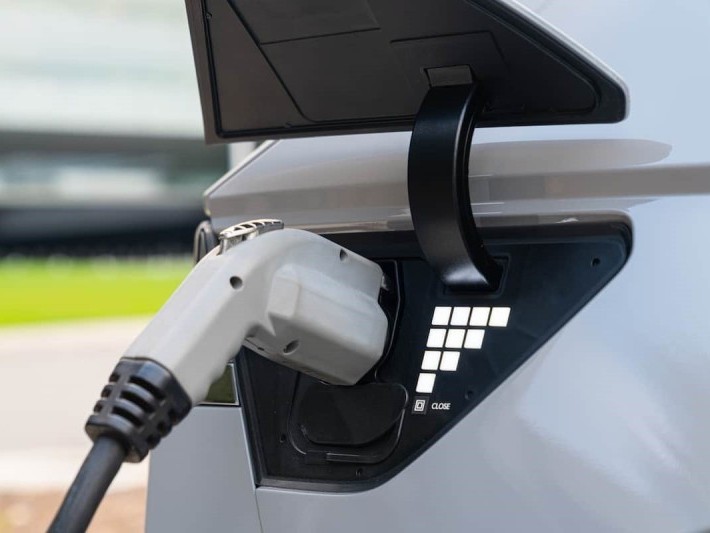
580,000 km & 87.7% Battery Health: Ioniq 5’s Incredible Durability
MichaelMay 6, 2025

Revolutionizing Hybrids: Hyundai’s New System vs. Toyota's Hybrid System
Kevin WongApr 22, 2025
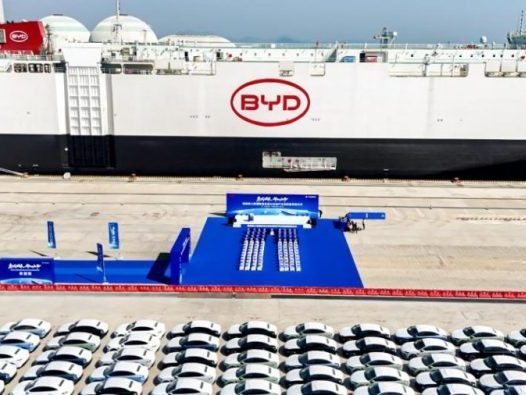
BYD Sets Global Sales Target of 5.5 Million Units for 2025
RobertMar 26, 2025
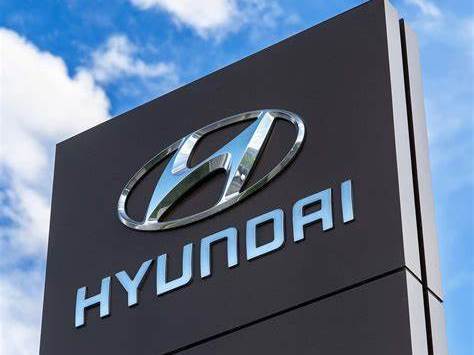
Hyundai is to launch an all-solid-state EV battery production line, but who's leading?
MichaelFeb 12, 2025
View More





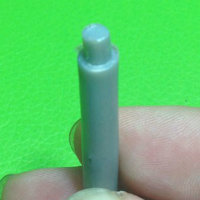





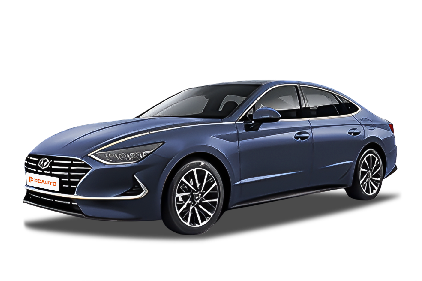





Pros
Cons